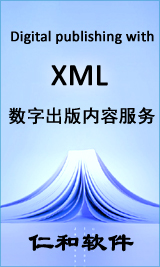S.K.Sadrnezhaad
,
S.Badakhshan Raz
材料科学技术(英文)
Losses of the alloying elements during vacuum induction melting of the binary NiTi alloys were evaluated by visual observation and chemical analysis of the NiTi melted specimens and the scalp formed on the internal surface of the crucible. The results indicated that the major sources of the losses were (a) evaporation of the metals, (b) formation of the NiTi scalp and (c) the sprinkling drops splashed out of the melt due to the exothermic reactions occurring between Ni and Ti to form the NiTi parent phase. Quantitative evaluations were made for the metallic losses by holding the molten alloy for 0.5, 3, 5, 10 and 15 min at around 100℃ above the melting point inside the crucible. Chemical analysis showed that there existed an optimum holding time of 3 min during which the alloying elements were only dropped to a predictable limit. Microstructure, chemical composition, shape memory and mechanical properties of the cast metal ingots were determined to indicate the appropriate achievements with the specified 3 min optimum holding time.
关键词:
Shape memory alloy (SMA)
,
null
,
null
S.K.Sadrnezhaad
,
E.Ahmadi
,
M.Mozammel
材料科学技术(英文)
Kinetics of dissolution of silver present in precious metal scraps in HNO3 was studied in temperature range of 26~85℃. Dissolution rate of silver was much faster than that of copper at all temperatures. Effects of particle size, stirring speed, acid concentration and temperature on the rate of dissolving of silver were evaluated. Dissolution rate decreases with particle size and increases with temperature. Dissolving was accelerated with acid concentrations less than 10 mol/L. Concentrations greater than 10 mol/L resulted in slowing down of the dissolution rate. Shrinking core model with internal diffusion equation t/τ=1-3(1-x)2/3+2(1-x) could be used to explain the mechanism of the reaction. Silver extraction resulted in activation energies of 33.95 kJ/mol for Ag-Au0:04-Cu0:10 and 68.87 kJ/mol for Ag-Cu0:23 particles. Inter-diffusion of silver and nitrate ions through the porous region of the insoluble alloying layer was the main resistance to the dissolving process. Results were tangible for applications in recycling of the material from electronic silver-bearing scraps, dental alloys, jewelry, silverware and anodic slime precious metal recovery.
关键词:
Silver
,
null
,
null
,
null
,
null
,
null
材料科学技术(英文)
Creep testing was conducted on K40S alloy. The detailed creep deformation and fracture mechanisms under constant load were studied. The results show that the stress exponent ranges between 7 and 14.4 at elevated temperature 973similar to1173 K, and that the activation energy is approximately 449.1 kJ/mol. During creep, the grain boundary sliding cut off primary carbides at the boundary, generating the "O" model cracks. The creep failure mode of K40S alloy is transgranular ductile and cracks originate at the primary carbides. A long carbide and matrix interface is often a preferential path for crack propagation. The creep mechanism is discussed in light of the creep microstructure, the stress exponent and the activation energy.
关键词:
K40S alloy;creep;fracture;crack propagation;activation-energies;superalloy;term
王宝奇
,
谷南驹
,
郭素珍
,
马晓莉
金属学报
利用Bain点阵对应对K-S模型的晶格改建过程进行了严密的数学描述.对于不同的马氏体正方度,提出了计算第一切变、第二切变及晶格调整的计算依据,并给出了普遍的计算公式.以Fe-1.4C和纯铁为例,计算了马氏体相变的点阵畸变.进一步分析表明,K-S模型实质是Bain模型的旋转.计算的结果与实测的取向关系相符合.
关键词:
K-S模型
,
null
,
null
Corrosion Science
Arc ion plating had been employed on a cobalt-base superalloy K40S to deposit a NiCrAlYSi coating to improve its oxidation resistance at 1323-1423 K in air. The K40S superalloy had poor oxidation resistance because a non-protective and easy spalling surface oxides scale mixed of Cr2O3 and CoCr2O4 was formed on its surface. After coated with NiCrAlYSi coating, a dense and protective alpha-Al2O3 scale was formed on the coating and excellently improved its oxidation resistance. Inter-diffusion obviously occurred between the coating and the substrate K40S superalloy in oxidation process, which resulted from Co atoms in K40S outwards diffused. A richen Cr and W carbides inter-diffusion layer was formed, which could acted as a diffusion barrier that barred Al atoms in coating inwards diffusion. Though the NiCrAlYSi changed into NiCoCrAlYSi during oxidation process, it still possessed a good oxidation resistance and. had a considerable long-term life. (C) 2008 Elsevier Ltd. All rights reserved.
关键词:
cobalt-base superalloy K40S;NiCrAlYSi coating;arc ion plating;high;temperature oxidation;inter-diffusion;aluminide coatings;cyclic oxidation;alloys
Transactions of Nonferrous Metals Society of China
Fatigue crack propagation behavior of K40S cobalt-base superalloy under ambient atmosphere at 700 degreesC and 900 degreesC was investigated. The detailed fatigue crack propagation and fracture mechanism under the alternating loads were studied. The results show that, there is a defined threshold for K40S alloy at elevated temperatures. The fatigue threshold is 23. 9 MPa . m(1/2) at 700 degreesC and 12 MPa . m(1/2) at 900 V. The significant decrease of the threshold with increasing temperature is associated with the oxidation induced embrittlement at crack tip. Observation on the fatigue fracture surfaces indicates a ductile fracture mechanism related to the fatigue crack growth.
关键词:
cobalt-base superalloy;fatigue crack propagation;fatigue threshold;ductility;growth-behavior;alloy;steel






